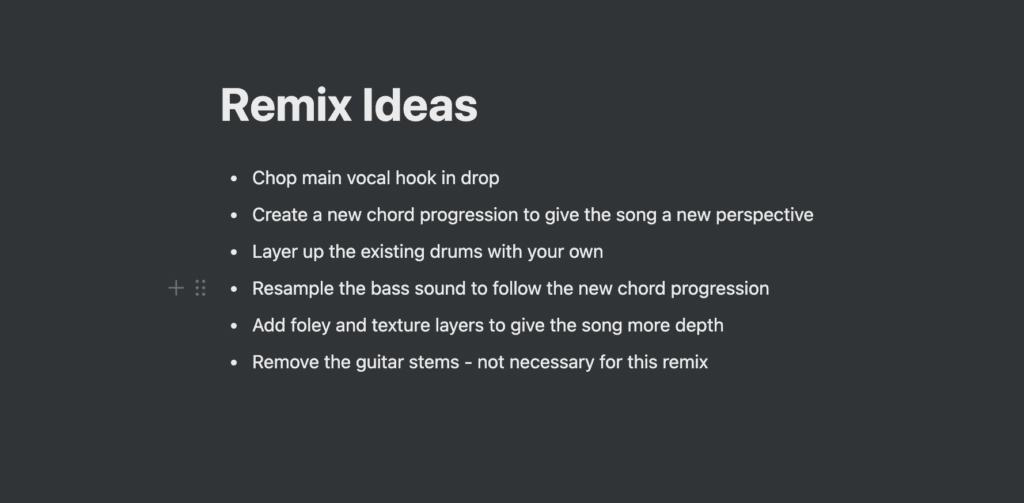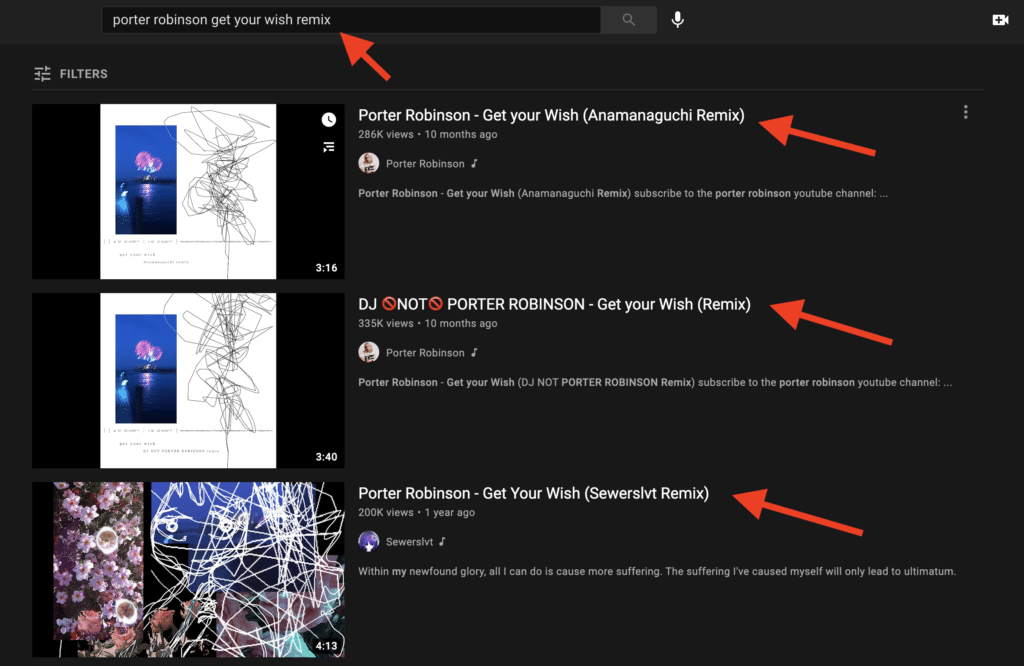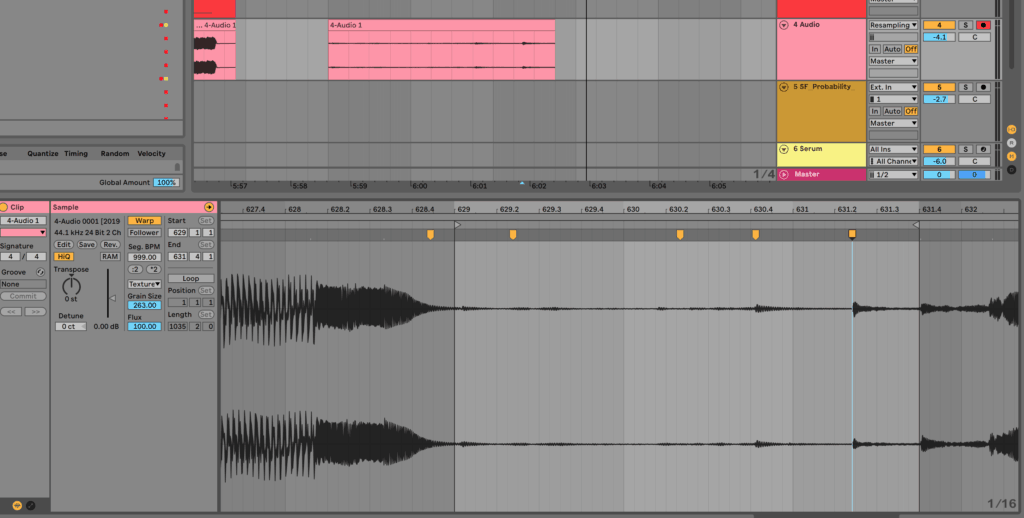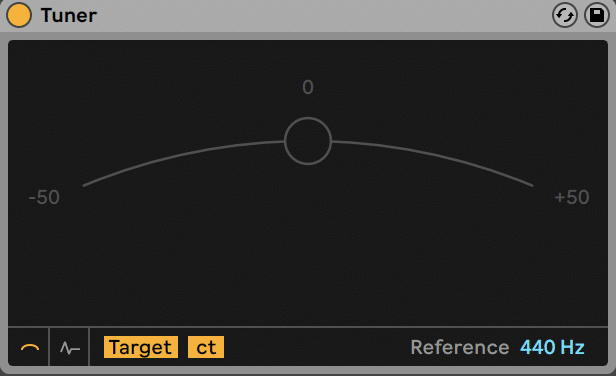How to Make a Remix Easy Online
So you want to remix a song?
Well, there's good news and bad news.
The bad news is that unless you know the fundamentals of electronic music production, you're going to have a hard time. The good news is that once you do, making a remix is pretty damn straightforward.
So what if you don't know the fundamentals?
Well, you've come to the right place. In this guide, I'll cover 21 tips to help you on your way, covering topics like:
- How making a remix/bootleg is different from an original
- Thinking ahead to create remixes faster (instead of wasting time)
- Creative ways to mangle stems (that most producers neglect)
- Incorporating your signature sound into a remix
- Why using fewer stems can help you make better remixes
Whether you're remixing a song for a competition, have been contracted an official remix for a release, or cooking up a cheeky bootleg of a popular song, these tips are for you. Read on to learn how to remix a song.
Note: If you're a new producer, I've put together a free 50-page remix guide on everything you need to know about remixing. This thing will get you set up with making remixes in no time.
1. Pick the Right Song to Remix
Pick a song that you think would benefit from a remix. You're more likely to follow through with the remix if you like the original song.
This is even more important if you're making a bootleg and don't have access to any stems; you need to pick a song that leaves room for work to be done.
As great as Iglooghost's music is, this one would be tough to remix well.
That's why acoustic/minimal songs are great to remix. Petit Biscuit's 'Sunset Lover' has such a strong hook but a lot of creative potential, which is why there have been a few remixes of it.
Note: this also applies when being asked to do remixes. If a label asks you to do a remix and you aren't a fan of it, why not ask if there are other releases that need to be remixed?
2. Listen for the Gaps
After choosing a song to remix, take a good listen to the original and write down any ideas that come to mind.
- Maybe you like the chorus but feel it needs stronger drums or a heavier bassline.
- Perhaps the verse is too long for your liking.
- You could even replace the existing melody with a more unique one.
Whatever comes to mind, write it down and take notes. You'll use them when you start working on your remix.
3. Form a Game Plan
Having a general plan that you can refer back to when stuck in a rut is invaluable. It helps you stay on task and work on the important. And despite what many argue, planning does not inhibit creativity!
Before starting a remix, why not do a bit of brainstorming? If you've got ideas from tip #2, then this is the time to write them down.

The result? You'll sit down to produce your remix with clear intentions and objectives instead of blankly staring at the screen feeling sorry for yourself.
Tip: Consider the audience. If you're trying to win a remix contest or gain attention from the original artist, think about how that should influence the remix. Are they looking for a club friendly remix, or something more radio friendly? Keeping these in mind will increase your chance of success.
4. Listen to Other Remixes
Listening to other remixes is a great way to spark some thought and creativity. I recommend listening to remixes of the same song you're trying to remix, or remixes of similar songs.

Just be careful when doing this as it's easy to end up copying the remix too closely. There's nothing wrong with being inspired by a remix and gathering a few ideas, but be wary of similarity.
5. Cut and Choose Your Material (Bootlegs)
If you don't have access to an acapella or any other stems, you're going to need to identify which parts of the original track you want to, and can, use.
You'll find that certain sections can't be used at all, simply because there's too much going on. I might, for example, take out the intro, outro, and choruses of an original track and only use the breakdown which contains a vocal, then build upon that.
Note: some songs have very little going on, e.g., piano and vocals. These tracks are a joy to bootleg as a lot of the content can be used.
6. Work WITH the Material
Respect the original track and its content and you'll have a much easier time remixing it.
This is why working with the material given to you instead of against it is essential.
Flume's remix of 'You & Me' by Disclosure is a great example of this – even though it's quite different from the original it doesn't shy away from featuring that main vocal hook and the background vocal effects.
It isn't wise to turn an original track that's in 4/4 time signature into 3/4, and a label won't accept your "remix" if there isn't a trace of the original track in it. Respect the original and work with the content given to you.
Tip: Listen through the stems and find ones that inspire you. Delete the rest, and build upon those.
7. Arrange your remix ASAP
One of the main reasons people don't finish remixes is because they don't get the arrangement down soon enough. Just like building a game plan, the arrangement gives you a sense of direction and allows you to step back to look at how your remix is developing as a whole.
As soon as you have ideas down, sketch out a basic arrangement. You should have it down quicker than you would normally when working on an original, because you already have a few ideas handed to you.
Note: I find it helpful to drag the original track/vocal into my DAW, marking each section of the song. This way, I have the arrangement in place from the start. I may change the arrangement later on in the production process, but I benefit from building on a solid foundation.

Want tips on how to write and arrange better music? Check out Songwriting For Producers.
8. Feature Parts from the Artist's Other Songs
This was brought to my attention quite recently as I listened to Estiva's remix of Only For You by Mat Zo. As you can hear, he included the melody from Lucid Dreams, which is one of Mat Zo's other popular tracks from the same album. You can hear it at 7 seconds in:
Heard any other remixes that do the same thing? Let me know in the comments!
9. Keep it Similar
A remix doesn't have to be incredibly contrasted to the original. Sometimes you might just want to add a little extra to the original, or expand on ideas.
For example, you'll often hear remixes where the artist has changed just the bassline and drums, but kept the overall vibe of the song. This is the case in What So Not's remix of 'Major Lazer – Get Free':
This doesn't work for every remix, but sometimes it's exactly what's needed. Don't be afraid to keep it similar and add a slight touch.
10. Use Parts of the Original Track
Using parts of the original track for fills and transitions is a great way to spice up your remix.
For example, you could take 1 bar of the original, stick it at the end of a 16-bar phrase in your remix, automate some phaser and filters to create an awesome transitional effect. There are many other ways to use the original audio, so get creative!
Oh, you want some more ideas?
- Pitch shift syllables or note stabs from the original to use in build-ups.
- Reverse bass and synth sounds from the original to add complexity and flavor.
- Sample drum sounds from the original to add another layer of familiarity.
11. Process and Mangle Stems
Want to impress the listener? Get creative with stems! You can make stems your own with enough processing. Reverse and chop up acapellas, apply heavy distortion to bass sounds, the possibilities are endless.

A few ideas to get you started…
- Use parts of the bass stem(s) to fill in your bassline groove.
- Chop, loop and reverse slices of the original vocal to create your own melodies and effects
- Chop one note from an instrument stem, put it into a sampler, then process it to create something that's new yet familiar.
- Add phasing, reverb, and filtering to the main melody stem in parts of your song to tease the listener.
- Apply reverb, delay, and distortion to FX stems to significantly change their sound.
If you're in Ableton Live, check out some of these creative tips which can be applied to processing and mangling.
12. Treat it as an Original
Sometimes we get too involved in the concept of "remixing" that we forget remixing requires originality to actually work. I find it helpful to think of a remix as an original track. This is easier when you're not familiar with the original track, and less likely to copy its style.
Sometimes, it can even be fun to take an existing original and incorporate a few of the main stems from a remix pack in. This works particularly well when you're in a creative rut.
13. Create Your Own Melody
Creating your own chord progression or melody in a remix offers yet another level of originality and can often be a tasteful twist. Take the Teqq Remix of Tritonal's "Now or Never" for example.
Listen to the original:
Listen to the remix:
Tip: A great way to create a remix that's unique and create is to start the remix without listening to the original. This will force you to reinterpret the original stems, creating something that varies from the original. It'll take a bit more work to get started, but it can yield fantastic results.
Read: The Ultimate Guide to Writing Better and More Memorable Melodies
14. Collaborate
I can't overemphasize the importance of collaboration. Not only is it ultra fun, but you learn a lot about how other people work and often end up in a more motivated and creative state than you would working by yourself.

Collaborating on a remix is just as fun, if not more fun than collaborating on an original. You'll both have different opinions on the original track, and you'll both come up with different ideas.
15. Keep the Original Breakdown
Producing a remix doesn't mean you have to change everything. If it's bootleg, you may be forced to change the drop, but there's nothing wrong with leaving the breakdown how it is.
The same applies with an official remix, if the original breakdown works well and flows with your remix, then leaving it in isn't a sign of laziness or incompetence, it's just an artistic decision.
Listen to any popular mashup and you'll see how a breakdown can be extracted from its original surroundings and still work effectively.
16. Use What's Needed
I once downloaded stems for a remix competition (that I never finished) and ended up with a 1GB file containing WAV files for every single track. There was no way I was going to use everything.
Just because you've been gifted with an abundance of audio and MIDI files it doesn't mean you have to use all of them. Take what's necessary and build your remix on top.
17. Train Your Ears
Often you won't get any MIDI files in a remix pack, for some people this can be a big problem as they aren't confident in their ability to work out notation from audio and while some DAWs have audio to MIDI conversion, it's well worth learning to transcribe yourself.

The best way to do this is to practice; remake a melody every day. You could also check out the music theory ear training exercises here.
This also helps with Tip #13. If your ears aren't primed then you'll have a much harder time creating your own melody underneath an acapella or something else. Learning music theory is important as well.
Tip: It helps to know the key of the original track. Try to find the key online, or use a software such as Mixed in Key to determine the key of the original.
18. Create and Add a Musical Signature
When creating a remix, it's essential that it adds to original.
A great way to do this is to add your musical signature to the track. This helps add character to the remix, making it stand out amongst all others.
Further, having your own musical signature is a great way to give the listener a sense of cohesion among all your tracks, making them more likely to remember you and your music.
Not sure what I mean? Learn about how Pharrell Williams always has the same intro on all his songs.
19. Add a Second Hook to Your Remix
Does the main idea in the original track not do it for you? Too weak? Too boring?
Why not add a second hook?
Jaytech's remix of Blood Groove and Kiki's progressive masterpiece known as Mirage features a memorable vocal chop in addition to the serene chord progression from the original.
The original:
Jaytech's remix with the vocal hook:
20. Make an Alternative Mix
Every now and then you'll come across a remix project where you've got too many ideas. While it can be fun to try and incorporate 20 different ideas into one track, it typically doesn't turn out great.
My suggestion? Make an alternative mix.
If you've been contracted a remix then send the label both and ask for their opinion (worst-case scenario is they don't want it and you keep it as a private remix) You can also save the extra ideas in a folder and use them in any original productions.
Additionally, remixes are a great opportunity to flex your 'producer muscles', so if you have too many ideas, you can create a different verse or chorus in each section, as long as the overall progression of the remix feels natural.
Note: this can also be applied to original tracks if you have too many ideas.
21. Ask for a Deadline
Whenever I get contracted to do a remix this is the first thing I ask for. Deadlines help you stay motivated and finish tracks.
Remix competitions have deadlines by default, and picking one that ends fairly soon is a great way to get back into gear (I often do this if I'm stuck in a rut with production to test myself and see how fast I can work). If you choose a remix competition that ends in 60 days then you're less likely to feel driven and pressured to finish the track.
Wrapping it Up
This isn't an all-encompassing guide to remixing (more on this soon), it's simply a collection of tips that I and others use. Remixes should be enjoyable, they shouldn't take months, and you should aim to be creative. Next time you do a remix, why not use a few of these tips?
Need More Help?
Learning how to make electronic music is hard.
There are tons of mistakes to be made, hundreds of YouTube tutorials telling you the right and wrong way to do things…
It's confusing.
If you want to master the fundamentals of electronic music production and remixing, then I've put together a FREE PDF guide. You'll learn everything, from the basics of remixing, to making your very own original.
Source: https://www.edmprod.com/21-remix-tips/
0 Response to "How to Make a Remix Easy Online"
Enregistrer un commentaire